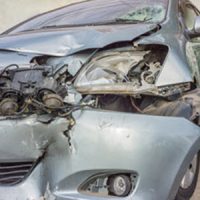Liability Theories in Car Crash Cases

Every year, car crashes seriously injure millions of Americans. The medical bills in these cases, by themselves, average over $40,000 each. This figure does not include other economic losses, such as lost earning capacity, and noneconomic damages, such as pain and suffering. Usually, these incidents aren’t “accidents,” especially if multiple vehicles were involved. These victims usually have legal options, as do passengers who were injured in a tortfeasor’s (negligent driver’s) vehicle.
Everyone is in a rush to resolve these cases. But a good Seattle car accident lawyer understands that settlement is a process, and it’s usually a long process. This process begins with case evaluation and medical treatment. Only then can a Seattle personal injury attorney begin meaningful negotiations with an insurance company. These stingy companies rarely make fair offers right off the bat. So, the process must continue, unless a victim is willing to settle for less than maximum compensation.
Defective Product/Road Design
Poorly-made tires substantially cause tens of thousands of car crashes every year. Other defective products cause injuries. Defective airbags are a good example. Over ten years after Takata paid a huge fine and declared bankruptcy, millions of vehicles with defective Takata airbags are still on American roads.
Usually, manufacturers are strictly liable for the injuries their defective products cause, whether the issue is a manufacturing defect or a design problem.
Similarly, engineers have a duty to design safe roads, and construction companies have a duty to build safe roads. Road designers could be liable for defective design, such as the failure to put up a traffic control device. The government, or other responsible party, could also be responsible for defective maintenance, such as the failure to repair a damaged sign.
These cases are usually very complex. Limited sovereign immunity laws shield government bureaucrats from liability and most construction companies are actually out-of-state holding companies.
Ordinary Negligence
Driver error causes over 98 percent of the car wrecks in Washington. Usually, this error is negligence, or a lack of care. In Washington, an ordinary negligence case has four basic elements:
- Duty: Most drivers have a duty of reasonable care. They must obey the rules of the road, both the written and unwritten ones. They must also avoid accidents if at all possible. Commercial drivers, like truck drivers, usually have a higher duty of care.
- Breach: Drivers breach their duty of care if they drive while impaired or drive aggressively. Driver impairment examples include driving while fatigued or intoxicated. Common aggressive driving examples include speeding and ignoring a traffic control device.
- Cause: The breach must substantially cause injury. If Mary crashes into Philip while it’s raining, the bad weather contributed to the wreck. But Mary’s negligence, usually impaired or aggressive driving, substantially caused it. A Seattle personal injury lawyer must also prove foreseeability (possibility) of injury.
- Damage: The damages in a car crash case usually include compensation for economic losses, such as medical bills, and noneconomic losses, such as pain and suffering. Usually, the victim must sustain a physical injury to have a case in court.
Victims have the burden of proof on all these elements. That burden of proof is usually a preponderance of the evidence (more likely than not).
Work With a Dedicated King County Lawyer
Car crash victims usually have multiple legal options. For a free consultation with an experienced personal injury lawyer in Seattle, contact the Emerald Law Group. After-hours visits are available.
Source:
injuryfacts.nsc.org/motor-vehicle/overview/introduction/
